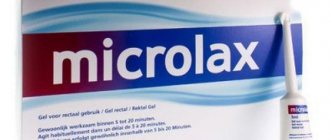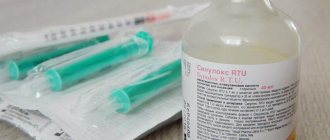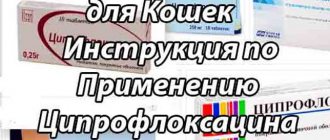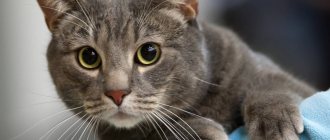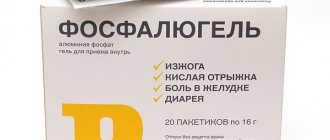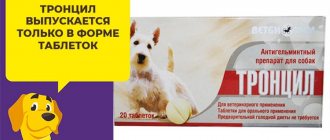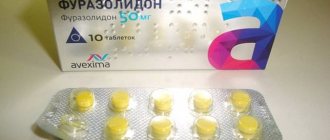Why does constipation occur in cats and why is it dangerous?
Constipation is a disorder in the rhythm of bowel movements, accompanied by difficulty in passing stool, pain and a feeling of heaviness in the abdomen. According to veterinarians, adult cats should go to the toilet at least once a day. A more rare bowel movement is also acceptable - once every two days (but this is no longer considered a good bowel movement, so it is recommended to prevent constipation). For kittens, the regularity of bowel movements should be 3–6 times a day (until the baby is completely switched to “adult” food).
Causes of defecation retention in cats:
- Poor nutrition. Constipation will occur if the cat constantly eats foods with an excessive amount of protein in relation to carbohydrates, as well as a high content of calcium and phosphorus.
- Improper drinking regime. Constipation always occurs in cats that drink too little liquid (an adult cat needs to drink 20–40 ml of water per kilogram of weight daily; when consuming dry food, the norm increases to 50–70 ml).
- Dysbacteriosis. A deficiency of beneficial intestinal bacteria causes a slowdown in the conversion of bound bile salts, which leads to excessive hardness of the stool.
- Diseases of the rectum (hemorrhoids, anal fissures, tumors, etc.). When defecating, the cat experiences pain, the sphincter spasms, which causes constipation.
- Congenital anomalies of the digestive system. This may be pathological elongation of the sigmoid colon, excessive bending of the large intestine.
- Obesity and physical inactivity, accompanied by a slowdown in metabolism, hormonal imbalances, impaired blood supply to the intestines and weakening of its walls.
- Side effects of medications. For example, antacids, painkillers, antispasmodics, when used for a long time, can lead to intestinal dysfunction.
Acute constipation often appears in acute infectious diseases due to the toxic effects of pathogens, side effects of drugs, physical inactivity and a gentle diet in which the diet contains a small amount of dietary fiber
Signs of constipation in a cat are not only rare bowel movements. If the feces are too hard and difficult to pass out of the intestines, then the cat will sit in the tray for a long time and push hard; after emptying, the stomach will remain full and hard. It is worth paying attention to the appearance of stool. With constipation, it will be dry, compacted, and may contain drops of blood (due to the fact that the passage of feces injures the intestinal walls).
Ignoring the symptoms of constipation is dangerous. Chronic delay in defecation provokes secondary colitis, inflammation of the intestine, enteritis, and increases the risk of developing malignant diseases.
Constipation can be complicated by pathologies of the biliary tract and hepatitis.
Operating principle
Healthy pets have regular bowel movements - 1-2 times a day. Lack of stool for 2-3 days is the first sign of difficult bowel movements. Excessive liquid stool or feces in the form of dry balls are also classified as constipation and a signal to give your cat petroleum jelly.
Liquid feces in large quantities indicate intestinal atony (emptying only after overflow), dry feces in small quantities indicate disturbances in peristalsis.
The longer waste products are not excreted, the more fluid from them is absorbed into the mucous membranes. This injures the mucous membranes, causes congestion, and poisons the body.
Intoxication is fraught for the animal:
- disturbances in the functioning of the liver, kidneys, heart;
- allergic reactions;
- deterioration in the condition of the coat.
Dull fur, itching, skin rashes are the first signs by which owners can visually identify internal problems. Chronic constipation is fraught with other serious complications, so you should give your cat Vaseline oil at the first signs described above.
It has an enveloping effect, like a lubricant for the intestinal walls. Due to this, intestinal motility improves, and the hard feces accumulated in it soften. The drug mechanically stimulates intestinal contraction and the removal of feces, toxins and other waste products from the body. Accumulated waste is removed from the body gently, without pain, injury or stress for the animal.
Vaseline oil for constipation
This remedy provides symptomatic relief and has a laxative effect, but is not a medicine that can completely cure the pathologies that cause constipation. That is why you should definitely visit a veterinarian and ask him to find out the exact reason for the delay in bowel movements. The doctor will examine the cat, make a diagnosis, and prescribe a course of treatment, where Vaseline oil can be added to make the furry patient feel better.
General information about the drug
Vaseline oil is liquid paraffin. It has the appearance of a colorless, odorless, oily liquid. The product is produced in glass jars of 25, 30, 40, 50 and 100 ml. Sold freely, without a prescription. The drug is produced by dozens of different ones, Viola, Ivanovo, Yaroslavl and Tula pharmaceutical factories, Borisov Medical Preparations Plant, etc.
Vaseline oil is the cheapest medicine for constipation, it costs 36–70 rubles
You should buy the product only in pharmacies (regular or veterinary). Some household chemical stores also sell petroleum jelly, but it is industrial grade and unsuitable for treatment. The fact is that the medical product undergoes a special filtration, as a result of which only large-molecular compounds remain that are unable to penetrate the blood and have a toxic effect. Before purchasing the drug, make sure that the packaging and instructions state that the oil is pharmaceutical and suitable for oral use and enemas.
To ensure that the drug does not lose its properties, it must be stored correctly. The oil should be kept in a tightly closed bottle in a dark place at a temperature of 8 to 20 ° C. Shelf life: 5 years from the date of issue. It is prohibited to use expired product.
How does oil affect cats?
The product enters the intestines and coats the intestinal walls and feces with an oily coating. Feces become softer and more slippery, as a result of which they are easily and quickly eliminated from the body. In facilitating bowel movements, it is also important that the oil has a slight tonic effect on the smooth muscles of the intestine - peristalsis is slightly enhanced and emptying is accelerated.
The laxative effect of pouring petroleum jelly into the mouth occurs after 3–5 hours. When using enemas, bowel movements occur within 30–60 minutes. But, despite the fact that oral administration gives a later result, the likelihood of complete cleansing of the intestines with this method is 3 times higher than with rectal administration of the drug.
Can it be given to pregnant cats and kittens?
Pregnancy at any stage is a contraindication for the use of petroleum jelly. It can cause reflex stimulation of the uterus and provoke early labor. During feeding, the drug can be given to cats, since the oil does not penetrate into the blood and does not mix with breast milk. Vaseline oil does not have a toxic effect on small kittens and, if the correct dosage is observed, it will be completely safe in the treatment of constipation.
Constipation in kittens often occurs at the very beginning of complementary feeding; Vaseline oil, approved for use in the treatment of cubs, will help save the situation.
Interaction of oil with other medications
Vaseline neutralizes the effect of fat-soluble substances that are part of most anticoagulants, anthelmintic drugs, tablets and solutions with vitamins A, D and E (they are drunk for rickets and osteoporosis). When using them, you must first wait until the oil is completely removed (5–7 hours), and then just take the medicine. There were no cases of increased toxicity when interacting with any drugs and increasing the side effects of each other.
Beneficial features
After ingestion, Vaseline oil coats all parts of the intestine with a slippery film and enhances motility. The action of the drug is aimed at removing hardened feces from the pet’s body naturally . A kind of barrier is created between waste products and the walls of the rectum. It blocks the absorption of toxins and water from bolus food.
The medicine does not penetrate into the animal’s blood and does not cause allergies. It promotes the slow movement of excrement and hairballs, clearing them from the digestive tract. Thanks to the mild laxative effect, the cat’s stool returns to normal.
How to give Vaseline oil to a cat
When administered orally, the dosage is calculated using the formula “0.5 ml per kilogram of cat.” The drug should be given no earlier than two hours after the last meal. The intervals between two doses should be at least 8 hours. The total daily dosage should not exceed 40 ml.
The cat itself will not swallow Vaseline oil. It must be injected into the mouth using a syringe without a needle or pipette. The course of treatment should not exceed 5 days. This is an important condition, since with prolonged use of the drug, the body gets used to it (the intestines stop functioning normally, and without a regular dose of laxative, constipation begins to occur more and more often).
The oil is thick and difficult to swallow, so when administered, the cat must stand or sit - if you pour the product into an animal lying on its back, it may choke
When and how to give an enema with Vaseline oil
It is recommended to give the product in oral form, but if the cat cannot swallow the oil (spits it out or starts vomiting all the time), then an enema is allowed. A solution of warm water and 5–10 ml of petroleum jelly (in a ratio of 1:3) is poured into a syringe with a soft tip. With minor constipation, feces will begin to come out immediately. Complete bowel movements can be expected within 30–40 minutes after the enema.
You should not give more than two enemas a day; the break between procedures should be at least 5–6 hours. The maximum course is 5 days.
One person cannot give an enema to a cat. Need a helper to hold the animal in place
Dosage
Vaseline oil is sold in every pharmacy, so purchasing it is not difficult. If the owner is sure that his pet is absolutely healthy, and constipation is caused solely by errors in nutrition, you can use the folk method of normalizing stool.
The first portion of Vaseline oil is given in a dosage of 20 g. After three hours, if there is no positive result, the pet still has not gone to the toilet, you need to give another 5 g. If there is no bowel movement, or the process is difficult for the animal, repeat dosage 5 g is administered after 60 minutes.
The maximum amount of oil per day for an animal weighing up to 5 kg is 40 g. In most cases, the urge to defecate with successful completion of the process occurs 1.5-2 hours after taking the first dose of the product. The owner must be prepared for the fact that after constipation, the animal’s first act of defecation will be accompanied by the release of feces with a sharp, fetid odor. This is a normal condition, no need to worry.
After constipation has been eliminated, Vaseline oil should be continued to be given in a dosage of 2 g the next day and again on the 3rd day in an amount of 1 g. This should be done for preventive purposes in order to finally normalize intestinal motility and prevent a recurrence of intestinal disorders.
In order to give the animal petroleum jelly to drink, you should take the product into a syringe (without a needle) and squeeze it into the oral cavity. After this, you need to hold the jaws closed for a few seconds so that the pet swallows the entire volume of the product.
Contraindications for use
Before using petroleum jelly, you should consult a veterinarian - the doctor will examine the animal, conduct the necessary tests and determine whether there are any strict contraindications for treatment with this remedy. For example, the drug is prohibited in cases where constipation is caused by blockage of the intestines with solid objects or a very large tumor. In this case, an urgent operation is needed, and the use of laxatives will only lead to the formation of fistulas and pose a threat to the life of the animal. Other contraindications are:
- intestinal ulcer,
- intestinal bleeding of unknown etiology,
- complicated by late stages of hemorrhoids.
The laxative is not recommended for course use for rickets and osteoporosis caused by hypovitaminosis of fat-soluble vitamins (A, D and E). Vaseline oil will prevent the medications you take from being absorbed and will cause even greater complications of these diseases.
Vaseline oil should not be given to pregnant cats to avoid causing premature birth.
general description
Vaseline oil is a laxative with an oily consistency. The drug is available in liquid form and is intended for oral or external use. External use – as a lubricant for a catheter or an enema when providing emergency care to cats.
The oil is colorless, odorless and tasteless; it contains no carcinogens, mutagens or components that can provoke an allergic reaction. The active ingredient is liquid paraffin. It relieves constipation, is completely eliminated from the body and is absolutely safe provided that the dosage is strictly followed.
How can you replace Vaseline oil?
After using Vaseline oil for five days, you must either completely stop taking the laxative or replace it with another remedy - for example, Duphalac, Microlax or Lactusin. For mild constipation, it is allowed to use traditional methods. If you give your cat a couple of drops of vegetable oil or fish oil, bowel movements will be easier due to the dilution of the feces. You should definitely adjust your diet - pumpkin, beets, sour cream, and kefir help eliminate constipation.
Benefits of using Vaseline
The product has no smell or taste, so the animal will not especially resist its use and try to spit out the remaining product from the mouth. An enema, of course, is the most effective method of treating constipation, but using it on cats is quite problematic. One person is unlikely to cope with the task.
Treating constipation with an enema is an extremely unpleasant and uncomfortable procedure. For a pet, such manipulation will become very stressful, which will lead to aggravation of an already serious condition.
Preventing constipation
After the cat’s digestion has normalized, it is important to carry out preventive measures to prevent recurrent constipation. The following measures can help prevent problems with bowel movements:
- Regular brushing of the cat, especially during the molting period.
- Periodic use of hair removal products (tablets and pastes contain lecithin and plant extracts).
- Balanced diet. Meat must be combined with foods containing fiber.
- Proper drinking regime for a cat.
- Normal weight of the animal (it is important not to let it overeat).
- Prevention of dysbiosis (for example, after treatment with antibiotics, take a course of probiotics).
Many diseases that cause constipation are asymptomatic in the first stages. Regular examinations by veterinarians and tests will help detect pathologies in a timely manner.
Side effects
Side effects are observed in exceptional cases, if the drug is used in accordance with the instructions and not often. Abuse of the drug, exceeding the permissible concentration, non-compliance with the dosage regimen prescribed by the veterinarian is fraught with:
- formation of nodes in the intestines;
- spontaneous release of oily fecal fluid from the anus of the animal;
- dehydration;
- lack of fat-soluble vitamins.
The owner should monitor the pet's well-being after taking the medicine. If there is vomiting, lethargy, refusal to eat, or other changes in behavior, you should show it to your doctor. It is possible that the cat is intolerant to the drug.
How to prevent constipation
Vaseline oil if the cat does not have a bowel movement for several days is an emergency measure, but not curative. Therefore, if constipation recurs frequently, you need to take your pet to the veterinarian to determine the causes of defecation problems.
There are a number of preventive recommendations that, if followed, will help prevent problems with stool in your furry pet:
- Regular brushing of long-haired breeds;
- taking vitamins that help strengthen hair, preventing hair loss;
- periodic use of phytomins - substances that cleanse the intestines and promote the release of compressed wool from it;
- proper and balanced diet;
- the constant presence in the menu of fermented milk products, which improve digestion and intestinal motility.
We suggest you read: How much does the Kurilian Bobtail weigh?
If a pet eats only dry commercial food, the owner must ensure that it drinks enough water. The quality of industrial feed also plays an important role. It is recommended that owners purchase industrial diets from the premium and super-premium categories, since they contain all the components necessary for normal digestion.
Do not forget about such a preventive measure as undergoing regular preventive examinations by a veterinarian. Many diseases of the digestive system do not have a pronounced symptomatic picture in the early stages of development. And the animal, besides periodic constipation, may not have other symptoms. Only an examination of the cat by a veterinarian will help to detect the disease in a timely manner in the early stages.
To avoid the problem of constipation in your pet, it is recommended to plant a special herb on the windowsill at home - oats or catnip. The stems of this plant continually grow back as the animal eats them. To water such grass, water with activated carbon diluted in it is used (a few tablets will be enough).
Oats and catnip contain vitamins and microelements that are beneficial for the cat’s body, which have a positive effect on the digestive system, promote active intestinal motility and prevent problems with stool, even if there are errors in the diet.
Treatment of kittens
Kittens are treated according to the same principle as adult animals.
Only the dosage of the drug will differ. For kittens (up to 1 kg), it will be enough to drop the product on the withers at the rate of 1-3 drops. It is not recommended to administer additional doses to children. It is strictly forbidden to exceed dosages.
Treatment of kittens
The laxative may not work if the discomfort is caused by volvulus or obstruction. Pathologies of this kind are treated through surgery, and during the recovery period, drugs of a different type are prescribed.
In any case, if none of the methods is effective, you need to contact a veterinarian. In some cases, individual reactions of the body to petrolatum oil may be observed, so standard methods of its use do not work.
Can I give it to an animal?
Once upon a time, a bottle of castor oil was kept in home medicine cabinets - the product was used to relieve constipation.
Now for these purposes it is recommended to use a vaseline product, which is a derivative of the chemical distillation of kerosene.
The raw materials undergo thorough filtration, freeing themselves from all impurities. The output is an oily substance without color, taste or smell. Therefore, taking the oil internally does not cause any discomfort.
You can buy the drug at the pharmacy, but you should give it to your pet only in extreme cases. If the product is abused, the tone of the intestinal muscles weakens, and the cat will not be able to relieve itself on its own.
The product itself does not cause any harm if it enters the body, does not cause allergies or poisoning, and does not penetrate into the blood. It is excreted unchanged, carrying feces along with it.
Mechanism of action
Once in the intestines, the oil lubricates all its sections.
By covering the walls with a thin film, the product enhances motility, and feces come out easily. In this case, despite the density of the feces, the intestines are protected from injury.
The oil helps preserve fluids from food and blocks toxins. Thick clumps of cat hair accumulated in the stomach are easily removed from the body.
But no matter how good the effect of oil is for constipation, it is not recommended to use it on your own. It is important to know when you can give the product to your cat and when you can’t. It is necessary to choose the right dosage and method of introducing the drug into the body.
Veterinarians usually recommend giving cats the oil orally. If after one dose the effect is not achieved, another portion of the drug is allowed, but not earlier than after 5 hours.
In some cases, a microenema is recommended. In each option, the instructions are strictly followed.
